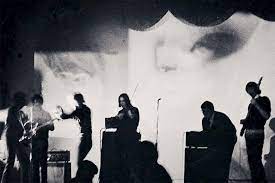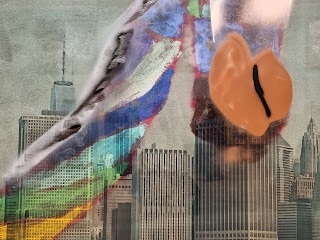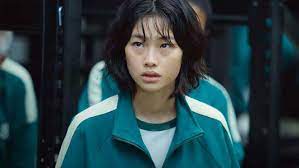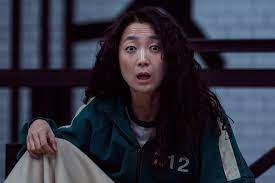"They were wild like the USA. A mystery band in a New York way. Rock and roll but not like the rest and to me America at its best. How in the world were they making that sound? Velvet Underground" - Velvet Underground by Jonathan Richman
I thought I knew the story of The Velvet Underground. The drugs, the falling out, the making up, the black leather jackets and shades, Nico, Andy Warhol, Doug Yule, the explosion, the implosion, the lack of success, and, finally, the huge huge influence that took in everyone from The Jesus and Mary Chain to U2, from The Sex Pistols to James, and from Nirvana to Joy Division.
There was great music before The Velvet Underground and there was great music after The Velvet Underground but it wasn't necessarily the same thing. Even with that in mind, none of those acts listed above could ever be mistaken for The Velvet Underground. Nobody could. As Jonathan Richman sang "how in the world were they making that sound"?
Todd Haynes' new film The Velvet Underground can't quite answer that question - and neither should it. What it can do is tell the story of The Velvet Underground, how they came together, how they fell apart, how they changed music forever, and how their music changed them, and us, forever.
Not bad for a band of whom Cher once said they would "replace nothing except suicide"! Was she even listening? I'll Be Your Mirror could bring tears to the eyes to even the hardest of listeners, Pale Blue Eyes is shot through with an almost painfully intense sense of romantic longing, Venus in Furs actually sounds like the music you'd hear as you're lowered down into an S&M sex dungeon, White Light/White Heat is an amphetamine fuelled freakout like nothing ever heard before, and the naivete and guile of Moe Tucker's vocals on After Hours gave way to Beat Happening and pretty much the whole C86 scene.
I haven't even mentioned Heroin, Sweet Jane, Femme Fatale, Sunday Morning, Rock'n'Roll, I Heard Her Call My Name, or Sister Ray. You can hear them all during the film but most of you know, and love, them anyway. You know that the later songs were beautiful and often heartbreakingly sad and you know that the earlier ones were more sonically innovative and chaotic, often avant-garde jams worked up into something resembling a pop song, but still burnt brightly with passion and anger.
You could stay at home and listen to the records and get that. But what Haynes gives you is both a feel for what it would be like to have been there at the time (helped by interviews with John Cale and Moe Tucker and recordings of interviews with the now deceased Lou Reed and Sterling Morrison) and some kind of understanding of why The Velvet Underground, of all bands, became the one who would become so legendary.
As Brian Eno once said of their debut album, it "only sold ten thousand copies, but everyone who bought it formed a band". I came of musical age two decades after The Velvet Underground appeared. I'd been brought up on pop and turned myself on to punk, new wave, and two-tone. Initially, I dismissed The Velvet Underground as boring old sixties music.
It was a stupid mistake, one not atypical of teenage boys who think they know it all. Eventually, curiosity got the better of me and I bought the 1985 compilation album of outtakes, VU, and, of course, I loved it. Temptation Inside Your Heart, I Can't Stand It, and One Of These Days became my gateway drugs to a world of Velvet Underground and Lou Reed solo stuff (foolishly, I waited many more years before delving into Cale's back catalogue) and I learned an important lesson.
Or at least half-learned it. Don't dismiss stuff you've never heard just because of some idiotic preconception. Another lesson may have been that if everyone you respect is saying something's good, it more than likely is. Don't put up some kind of weird defensive wall because someone got there before you. Just enjoy the music.
Which I have done now for nearly three and a half decades. So, like I said, I thought I knew The Velvet Underground story and, indeed, I did know much of it. I knew roughly how they formed, I knew Warhol acted as producer but was more figurehead and general chaos conductor, I knew Nico drifted in to the band and soon drifted out again to follow her own muse, I knew Reed sacked Warhol, then sacked Cale, brought the unfairly accursed Doug Yule in to replace him, and then, eventually, pretty much, sacked himself bringing the band to a close, notwithstanding one last album that didn't feature a single original member and that nobody ever talks about anymore.
But I didn't really know how, or even why, these things played out. Haynes' film puts some flesh on the bones of the story and with the help of interviewees like John Waters, La Monte Young, Marian Zazeela, and the tiggerish Jonathan Richman (among many others) it does so fascinatingly and incisively and with no little panache. A particular high point is hearing a recording of David Bowie explaining how Lou Reed's lyrics reminded him of Baudelaire or Rimbaud.
Classic Bowie namedrop or just Bowie's trademark generosity in giving credit to others where it's due? Either way, it's not important. Others in the film namecheck John Cage, Jasper Johns, Bob Dylan, The Beatles, and Edward Albee but it is the circle of people around The Velvet Underground themselves (Jonas Mekas, Mary Woronov, Danny Flynt, and even Lou's sister Merrill Reed Weiner) whose insights are the most revealing.
Sometimes funny too. Not least when Merrill Reid Weiner dances to Lou's pre-Velvets novelty tune The Ostrich. Quite rightly, the best stories are left to the band members themselves. In archive footage, we hear Reed talking about how an early band of his were so bad they had to change their name after each show to ensure they'd get booked again and Tucker's lost none of her disgust at hippies, not least Frank Zappa, with their 'flowers' and 'hair'.
Even if, for a spell, the band swapped the black leather for paisley shirts and Tucker sported a blouse with a collar so sharp it'd take your eye out. Cale compares the early sound of The Velvet Underground to that of a fridge and gets possibly the biggest laugh of the film when, near the end, he casually mentions that he's never once met Doug Yule.
Nor does he seem remotely interested in remedying that situation. While The Velvet Underground, the Reed and Yule iteration, were a wonderful pop band and Yule had a lovely voice which did justice to some of Reed's more sentimental compositions, The Velvet Underground of Reed, Cale (and, of course, Morrison and Tucker) was a force of nature.
The film tells the story of how a tortured, tempestuous, sexually experimental boy who'd been moved by his family from Brooklyn to Long Island and hated it (Reed) joined with a classically trained avant-garde musician who'd grown up in a mining village in the valleys north of Swansea and endured more than his own share of trauma as a child (Cale) to realise, against all the odds, their dreams.
Cale had been performing eighteen hour Erik Satie recitals and Reed dreamed of becoming a rock'n'roll star despite being average, at best, on guitar and having a voice most unlike a choirboy at a time when the notion of singing in a gravelly New York accent went firmly against the grain of an era that eulogised The Beach Boys and The Mamas and the Papas.
The fact that Reed achieved this dream is testament to his vision but also to that of Cale and, of course, Warhol. That Todd Haynes was able to tell that story in a manner so befitting of the band, experimental in places but still held together by a firm narrative - as Lou Reed's lyrics so often were, is testament to the fact that he has done the band justice.
On a couple of occasions I found this film, and more so the music of The Velvet Underground, so deeply moving I had to wipe tears from my eyes. When Jonathan Richman talks about The Velvet Underground it is from a place of knowledge and a place of admiration but, more than anything, it is from a place of love. To him, as to so many of us, they were our wind, our rain, and our sunset. The light on our door to show us we were home. They were our mirror and because mirrors reflect the ugly side of life too, it feels all the more transformative when the beauty shines through.





























































